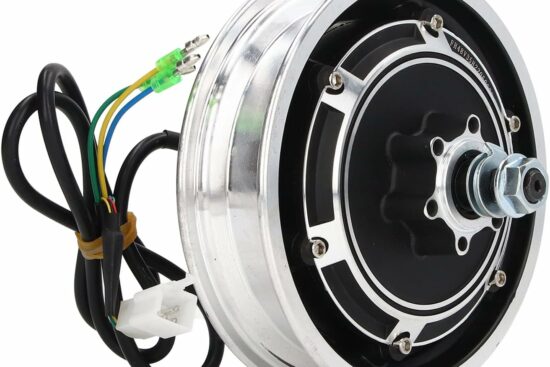
Electric bikes have become increasingly popular as an eco-friendly and efficient mode of transportation. However, with the rise in the use of electric bikes, there has also been an increase in the number of battery fires associated with them. Understanding the causes and prevention of these fires is crucial to ensure the safety of e-bike riders.
Lithium-ion batteries, which power most electric bikes, are known to be prone to overheating and catching fire. The risk of battery fires can be exacerbated by factors such as overcharging, poor battery maintenance, and exposure to extreme temperatures. As a result, it is important for e-bike riders to take safety measures to prevent battery fires and for manufacturers to implement safety features in their products.
Key Takeaways
- Lithium-ion batteries are prone to overheating and catching fire, making e-bike battery fires a safety concern.
- Safety measures such as proper battery maintenance and charging habits can help prevent battery fires.
- Manufacturers should implement safety features in their e-bike products to ensure rider safety.
Related Posts:
Understanding E-Bike Battery Fires
Electric bike (E-bike) battery fires have become a major concern due to the potential for serious injuries, property damage, and even fatalities. Understanding the causes of E-bike battery fires is crucial to prevent such incidents from occurring. In this section, we will discuss the main causes of E-bike battery fires and how to prevent them.
Causes of E-Bike Battery Fires
Overheating
One of the most common causes of E-bike battery fires is overheating. Overheating can occur due to several reasons, such as overcharging, exposure to high temperatures, or a faulty charging system. When the battery overheats, it can cause a thermal runaway, which is a chain reaction that can lead to an explosion or fire.
Short Circuit
Another common cause of E-bike battery fires is a short circuit. A short circuit can occur when the positive and negative terminals of the battery come into contact with each other, causing a surge of electrical current. This surge of current can lead to a fire or explosion.
Preventing E-Bike Battery Fires
Proper Charging
To prevent E-bike battery fires, it is essential to follow the manufacturer’s instructions for charging the battery. Overcharging the battery can cause it to overheat and lead to a thermal runaway. It is also important to use the correct charger for the battery to prevent any issues.
Storage
When storing the E-bike, it is essential to remove the battery and store it in a cool, dry place. Exposure to high temperatures can cause the battery to overheat and lead to a fire.
Inspections
Regular inspections of the E-bike battery can help prevent fires. Look for any signs of damage, such as cracks, bulges, or leaks. If you notice any damage, stop using the battery immediately and replace it.
Related Posts
Safety Measures to Prevent Battery Fires
Electric bike battery fires are a serious concern that can cause harm to both the rider and the surrounding environment. Therefore, it’s essential to follow some safety measures to prevent battery fires. Here are some tips:
- Charge the battery in a safe place: Always charge your electric bike battery in a safe and well-ventilated area. Do not leave the battery charging overnight or unattended.
- Use the right charger: It’s crucial to use the charger that comes with your electric bike battery. Using an incompatible charger can cause battery damage and increase the risk of fire.
- Replace damaged batteries: If you notice any damage to your electric bike battery, such as cracks or bulges, replace it immediately. Damaged batteries are more likely to cause a fire.
- Store the battery correctly: Store your electric bike battery in a cool and dry place. Avoid exposing it to extreme temperatures or direct sunlight.
- Follow safety standards: Always follow the safety standards and guidelines for electric bike batteries. These standards ensure that the battery is safe to use and reduce the risk of fire hazards.
In conclusion, following these safety measures can help prevent electric bike battery fires and ensure your safety while riding. Remember to always prioritize safety and take necessary precautions to avoid any accidents.
Related Posts:
Role of Lithium-Ion Batteries in E-Bike Fires
Lithium-ion batteries are commonly used in electric bikes due to their high energy density and low weight. However, these batteries are flammable and can cause fires and explosions if they are not handled properly. The most common cause of e-bike fires is the lithium-ion battery, which can ignite if it is damaged or overcharged.
Lithium-ion batteries contain a flammable electrolyte that can ignite if it is exposed to air. If the battery is damaged or punctured, the electrolyte can leak out and ignite, causing a fire. Overcharging the battery can also cause it to ignite, as the excess energy can cause the battery to overheat and catch fire.
In recent years, there have been several incidents of e-bike fires caused by lithium-ion batteries. These fires have caused injuries and property damage, and have raised concerns about the safety of e-bikes. It is important to handle lithium-ion batteries with care and to follow the manufacturer’s instructions for charging and storage.
To reduce the risk of e-bike fires, it is important to use high-quality lithium-ion batteries that are designed for use in e-bikes. It is also important to avoid overcharging the battery and to use a charger that is designed for the specific battery model. If you notice any signs of damage or swelling on the battery, you should stop using it immediately and replace it with a new one.
In conclusion, lithium-ion batteries play a significant role in e-bike fires. It is important to handle these batteries with care and to follow the manufacturer’s instructions for charging and storage. By taking these precautions, you can reduce the risk of e-bike fires and ensure that your e-bike is safe to use.
Fire Incidents Involving E-Bikes
Electric bike battery fires are a growing concern, with the number of fires caused by e-bikes increasing each year. In 2021, nearly 18,000 fires were caused by electric bicycles, and the number is expected to continue rising.
These fires can be caused by a variety of factors, including battery defects, improper charging, and collisions. When a battery catches fire, it can quickly spread to the rest of the bike or nearby objects, leading to significant property damage, injuries, and even death.
New York City has seen a number of high-profile e-bike fires in recent years. In June 2021, a fire started in an electric bike shop in the city, leading to the death of one person and injuring several others. The New York City Fire Department (FDNY) has responded to numerous e-bike fires in the past few years, and is working to develop regulations aimed at preventing battery fires.
To reduce the risk of e-bike fires, it’s important to follow proper charging procedures and avoid overcharging the battery. It’s also important to regularly inspect the battery and bike for signs of damage or wear, and to replace any damaged components promptly.
If you experience an e-bike fire or witness one, it’s important to stay calm and call 911 immediately. Do not attempt to put out the fire yourself, as this can be dangerous and may cause the fire to spread.
In summary, e-bike battery fires are a serious concern that can lead to significant property damage, injuries, and even death. By following proper charging procedures and regularly inspecting your bike and battery, you can help reduce the risk of a fire. If you experience an e-bike fire, stay calm and call 911 immediately.
Regulations and Standards for E-Bike Batteries
As electric bikes gain popularity, there has been increased concern about the safety of their batteries. The risk of battery fires is a significant concern, and regulations and standards have been put in place to ensure the safety of consumers.
The U.S. Consumer Product Safety Commission (CPSC) is responsible for regulating the safety of consumer products in the United States. The CPSC has issued several warnings about the risk of battery fires in electric bikes and has urged consumers to take precautions when using and charging their bikes.
In addition to the CPSC, several voluntary standards have been developed to ensure the safety of e-bike batteries. The EN 15194 standard is a European standard that specifies safety requirements and test methods for electric bicycles. This standard covers a range of safety issues, including the risk of explosion, fire, high temperatures, and rupture of a battery case.
Many cities and local governments have also enacted regulations related to e-bike batteries. For example, the New York City Council passed legislation in 2019 that requires e-bike batteries to meet certain safety standards. The legislation also requires e-bike riders to wear helmets and follow traffic laws.
Overall, it is important for consumers to be aware of the regulations and standards related to e-bike batteries. By following these guidelines, consumers can help ensure their safety and the safety of others.
The Role of Manufacturers in E-Bike Battery Safety
As an e-bike rider, you rely on the battery to power your ride. However, with the increasing number of e-bike battery fires, it is essential to consider the role of manufacturers in ensuring the safety of their products.
Reputable manufacturers understand the critical role they play in ensuring the safety of their products. They invest in research and development to create safe and reliable batteries. They also use quality materials and follow strict manufacturing processes to ensure that their batteries meet safety standards.
When choosing an e-bike, it is essential to consider the manufacturer’s reputation. Reputable manufacturers have a track record of producing safe and reliable batteries. They also have a customer support team that can answer your questions and concerns.
Manufacturing processes also play a critical role in ensuring the safety of e-bike batteries. Reputable manufacturers follow strict manufacturing processes that ensure the safety and reliability of their batteries. They also use quality control measures to identify and address any potential safety issues.
When purchasing an e-bike, it is essential to research the manufacturer’s manufacturing process. Look for information on their website or contact their customer support team to learn more about their manufacturing process.
It is also important to note that not all e-bike batteries are created equal. Some batteries may be cheaply made and may not meet safety standards. These batteries may be sold on online marketplaces like Amazon, where it can be challenging to verify their safety.
To ensure that your e-bike battery meets safety standards, look for batteries that have been certified by Underwriters Laboratory (UL). UL is an independent safety science company that tests and certifies products to ensure they meet safety standards.
In conclusion, manufacturers play a critical role in ensuring the safety of e-bike batteries. Reputable manufacturers invest in research and development, use quality materials, and follow strict manufacturing processes to create safe and reliable batteries. As a consumer, it is essential to research the manufacturer’s reputation and manufacturing process and look for batteries that have been certified by UL to ensure your safety while riding.
E-Bike Battery Charging and Storage
When it comes to charging and storing your e-bike battery, there are a few things you should keep in mind to prevent battery fires and ensure the longevity of your battery.
Charging
When charging your e-bike battery, it is important to follow the manufacturer’s instructions carefully. Make sure to use the charger that came with your e-bike and avoid using third-party chargers that may not be compatible with your battery.
Always charge your battery in a well-ventilated area away from direct sunlight and other heat sources. Do not leave your battery charging unattended for long periods of time, and never charge your battery overnight.
It is also important to avoid charging your battery in extreme temperatures. Charging your battery in temperatures below freezing or above 60°C can cause damage to the battery and increase the risk of fire.
Storage
When storing your e-bike battery, it is important to keep it in a cool, dry place away from direct sunlight and other heat sources. Avoid storing your battery in temperatures below freezing or above 60°C.
If you are storing your battery for an extended period of time, it is recommended to store it with a charge between 30-60%. Storing your battery fully charged or completely drained can cause damage to the battery and reduce its overall lifespan.
It is also important to store your battery in a location where it will not be damaged or punctured. Avoid storing your battery near sharp objects or in areas where it may be knocked over or dropped.
By following these guidelines for charging and storing your e-bike battery, you can help prevent battery fires and ensure the longevity of your battery.
Recycling and Disposal of E-Bike Batteries
When it comes to disposing of e-bike batteries, it’s important to do it properly to avoid any potential hazards. E-bike batteries contain hazardous materials, such as lithium, which can be dangerous if not disposed of correctly. In addition, e-bike batteries can pose a fire risk if they are not handled properly.
The good news is that e-bike batteries can be recycled. Recycling e-bike batteries is an important step in reducing the environmental impact of e-bikes. Recycling not only helps to reduce waste but also enables valuable materials to be recovered and reused.
When recycling e-bike batteries, it’s important to choose a reputable recycling company. A reputable recycling company will ensure that the batteries are disposed of in a safe and environmentally friendly manner. They will also ensure that any valuable materials are recovered and reused.
In addition to recycling, there are other ways to dispose of e-bike batteries. Some e-bike manufacturers offer take-back programs, which allow customers to return their old batteries to the manufacturer for safe disposal. This is a great option for those who want to ensure that their batteries are disposed of safely and responsibly.
It’s important to note that not all e-bike batteries are recyclable. Some older e-bike batteries may contain materials that are difficult to recycle. In these cases, it’s important to dispose of the batteries properly. Many local recycling centers offer battery recycling programs, which allow you to dispose of your batteries safely and responsibly.
In conclusion, recycling and proper disposal of e-bike batteries is crucial for both the environment and public safety. By choosing a reputable recycling company or participating in a take-back program, you can ensure that your e-bike batteries are disposed of safely and responsibly.
Impact on Delivery and Mobility Services
Electric bikes are widely used for delivery services, especially in urban areas where they are a popular choice due to their efficiency and low cost. However, the risk of battery fires poses a significant threat to delivery workers and the delivery industry as a whole. The Los Deliveristas Unidos, a group of delivery workers in New York City, have reported incidents of electric bike battery fires, which have caused injuries and destroyed property.
Delivery workers are particularly vulnerable to battery fires as they often carry multiple batteries and operate their bikes for long hours. The batteries can overheat and catch fire due to factors such as overcharging, damage, or poor quality. The resulting fires can cause serious injuries and damage to property, including the loss of valuable goods.
The impact of electric bike battery fires is not limited to delivery workers. Mobility services such as Uber Eats and other food delivery platforms also rely heavily on electric bikes for their operations. Battery fires can disrupt their services, cause damage to their equipment, and lead to financial losses.
Micro-mobility devices such as e-scooters are also powered by batteries and are susceptible to battery fires. While e-scooter battery fires are less common than those of electric bikes, they can still pose a risk to riders and pedestrians. The use of e-scooters has increased in recent years, and it is important for manufacturers and operators to ensure the safety of their devices.
In conclusion, the risk of electric bike battery fires poses a significant threat to delivery workers, mobility services, and micro-mobility devices. It is crucial for manufacturers, operators, and users to take necessary precautions to prevent battery fires and ensure the safety of everyone involved.
Frequently Asked Questions
What are the common causes of battery fires in electric bikes?
The most common causes of battery fires in electric bikes are overcharging, overheating, mechanical damage, and manufacturing defects. Overcharging can cause the battery to overheat and catch fire. Mechanical damage can puncture the battery casing, which can cause a short circuit and lead to a fire. Manufacturing defects can cause batteries to malfunction and overheat, which can also lead to a fire.
How can I prevent my electric bike battery from catching fire?
To prevent your electric bike battery from catching fire, you should follow these tips:
- Always use the charger that came with your bike or a charger recommended by the manufacturer.
- Do not overcharge your battery. Once it is fully charged, unplug it from the charger.
- Keep your battery away from heat sources, direct sunlight, and water.
- Do not puncture or damage your battery.
- Do not store your battery near flammable materials.
What should I do if my electric bike battery catches fire?
If your electric bike battery catches fire, you should immediately move away from the bike and call the fire department. Do not try to put out the fire yourself. If possible, remove the battery from the bike and move it away from any flammable materials.
Are there any safety regulations for electric bike batteries?
Yes, there are safety regulations for electric bike batteries. In the United States, electric bike batteries must comply with the safety standards set by the Consumer Product Safety Commission (CPSC). These standards include requirements for overcharge protection, short circuit protection, and temperature control.
How long do electric bike batteries typically last?
The lifespan of an electric bike battery depends on several factors, including the type of battery, how often it is used, and how it is maintained. Generally, lithium-ion batteries, which are the most common type of electric bike battery, last between 2 and 4 years with regular use.
What are the signs that my electric bike battery may be at risk of catching fire?
The signs that your electric bike battery may be at risk of catching fire include:
- The battery feels hot to the touch when charging or in use.
- The battery emits a strange odor when charging or in use.
- The battery is swollen or bulging.
- The battery has visible damage, such as cracks or punctures.




















